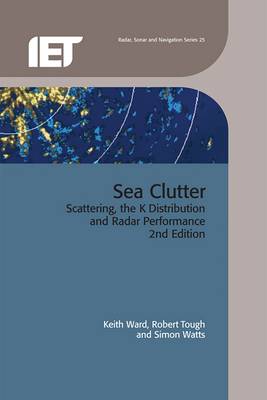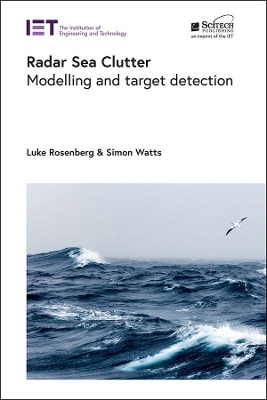Radar, Sonar and Navigation
2 total works
Sea Clutter: Scattering, the K Distribution and Radar Performance, 2nd Edition gives an authoritative account of our current understanding of radar sea clutter. Topics covered include the characteristics of radar sea clutter, modelling radar scattering by the ocean surface, statistical models of sea clutter, the simulation of clutter and other random processes, detection of small targets in sea clutter, imaging ocean surface features, radar detection performance calculations, CFAR detection, and the specification and measurement of radar performance. The calculation of the performance of practical radar systems is presented in sufficient detail for the reader to be able to tackle related problems with confidence. In this second edition the contents have been fully updated and reorganised to give better access to the different types of material in the book. Extensive new material has been added on the Doppler characteristics of sea clutter and detection processing; bistatic sea clutter measurements; electromagnetic scattering theory of littoral sea clutter and bistatic sea clutter; the use of models for predicting radar performance; and use of the K distribution in other fields.
The first maritime surveillance radars in World War II quickly discovered that returns from the sea, soon to be known as sea clutter, were often the limiting factor when attempting to detect small targets while controlling false alarms. This remains true for modern radars, where the detection of small, slow moving targets on a rough sea surface remains one of the main drivers for maritime radar design, particularly in the development of detection processing.
The design, development and testing of radar signal processing for maritime surveillance requires a very detailed understanding of the characteristics of radar sea clutter and of the combined target and clutter returns. This book provides an updated and comprehensive review of the latest research into radar sea clutter and detection methods for targets in sea clutter. The emphasis is on understanding the characteristics of radar sea clutter as observed with different radars, viewing geometries and environmental conditions. This understanding is assisted by the development of mathematical models that are used in the radar design process.
In recent years there has been an increased interest in operating at higher altitudes, resulting in the sea surface being illuminated with larger grazing angles than used in traditional airborne surveillance platforms or ground-based systems. There has also been significant research into bistatic operation, including passive radars using illuminators of opportunity. The use of coherent and multi-aperture systems in maritime radar are also of increasing interest and these new application areas are also covered in this book.

